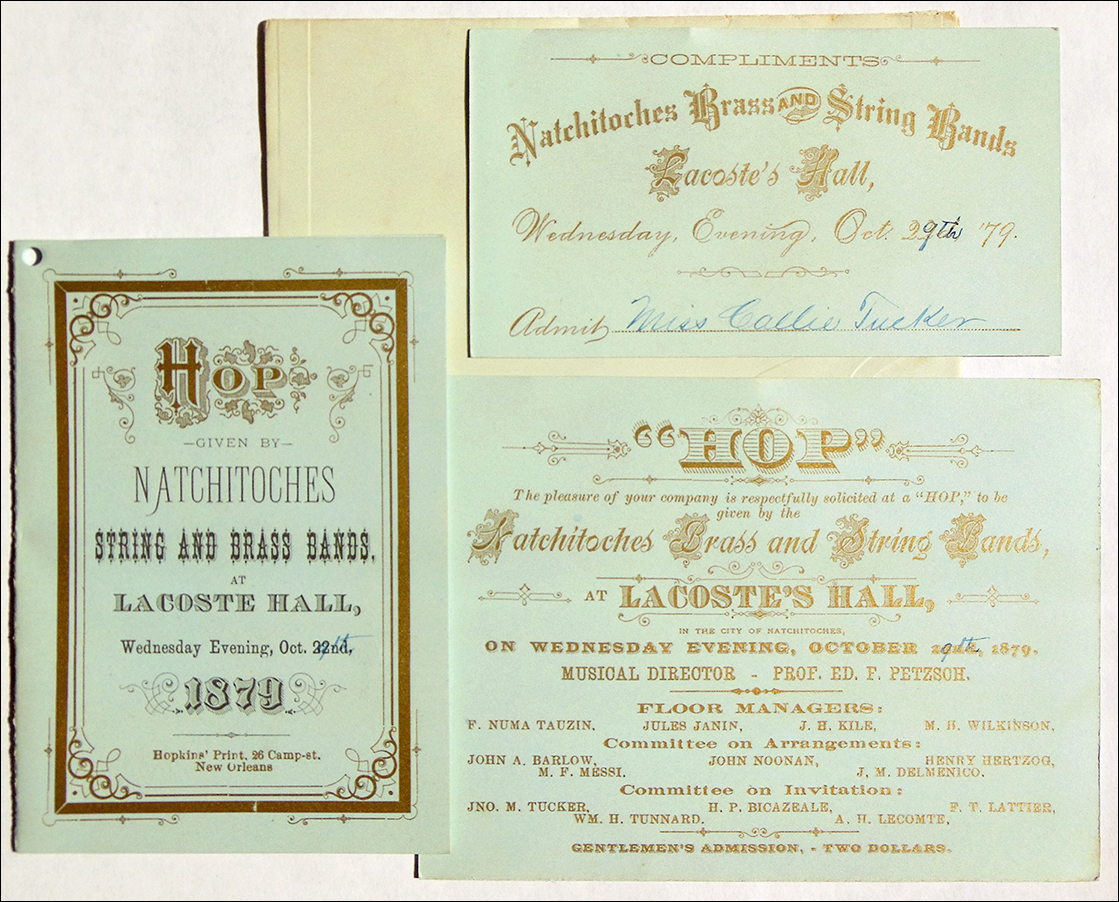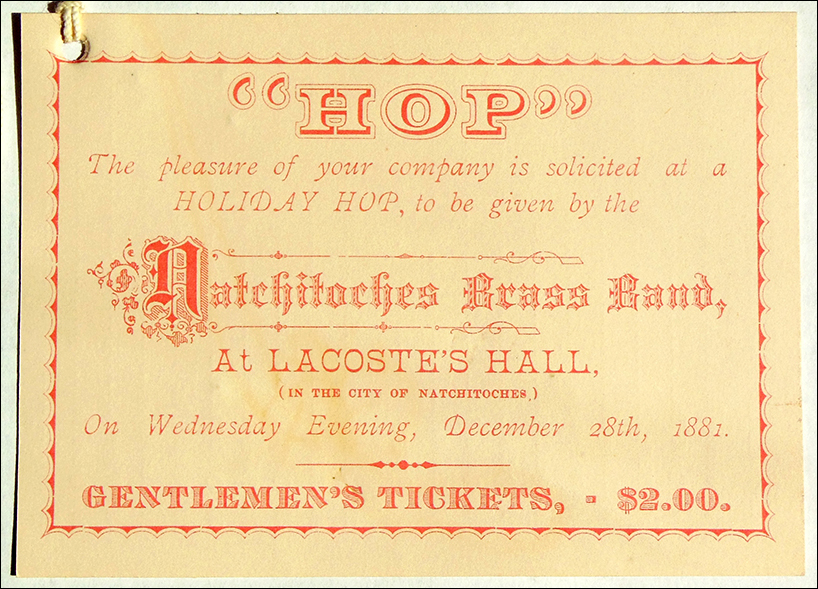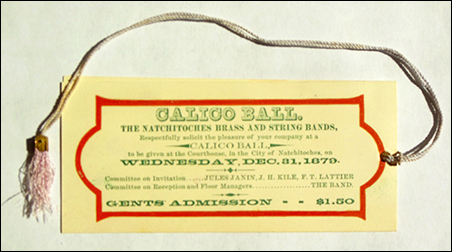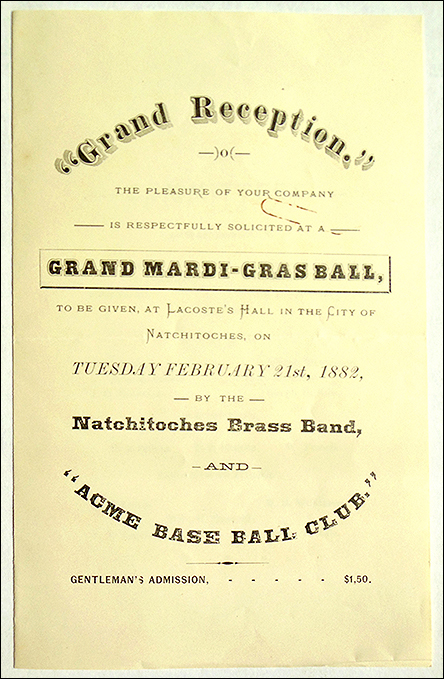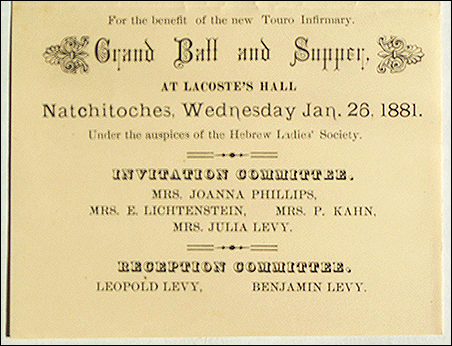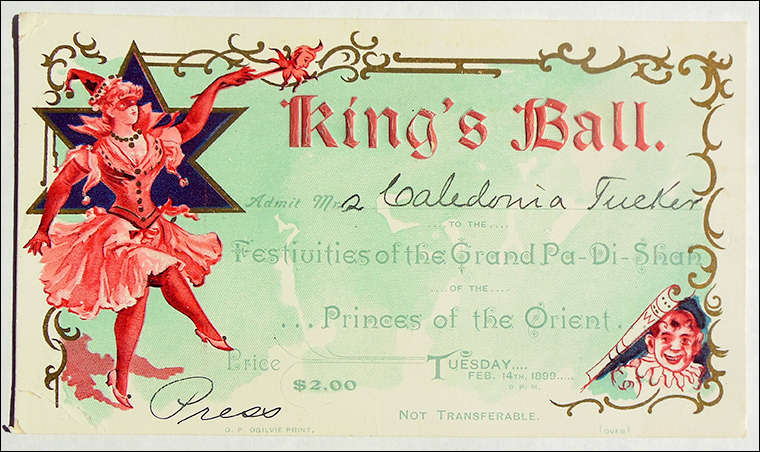May I Have This Dance? Nineteenth-Century Louisiana Dance Invitations
In his book Sketches, Historical and Descriptive, of Louisiana (1812), the Northern traveler Amos Stoddard observed that dancing was one of the most popular pastimes in Louisiana. It was a place where men and women were “particularly attached to the exercise of dancing, and carry it on to an incredible excess. Neither the severity of the cold, nor the oppression of the heat, ever restrains them from this amusement, which usually commences early in the evening, and is seldom suspended till late the next morning. They even attend the balls not infrequently for two or three days in succession, and without the least apparent fatigue. At the exercise the females, in particular, are extremely active, and those of the United States [Louisiana was still a territory] must submit to be called their inferiors.”
Dancing was still a popular social activity later in the nineteenth century. In this post, we feature a selection of dance invitations from the J.M.B. Tucker Family Papers. Mr. Tucker, a judge, and his wife Caledonia lived in Natchitoches, near Louisiana’s western border with Texas. Their daughter Callie was born in 1858. Many of the invitations date from the 1870s and 1880s, when Callie was a young woman, and shed light on the social life of rural northwest Louisiana.
Invitation to a “hop” given by the Natchitoches String and Brass Bands at Lacoste Hall, October 1879:
Invitation to Natchitoches Brass Band Hop, December 1871:
Invitation and dance card to the Calico Ball, December 1879:
Grand Mardi-Gras Ball, given by the Natchitoches Brass Band and Acme Baseball Club, 1882:
Grand Ball and Supper for the benefit of the Touro Infirmary of New Orleans, “under the auspices of the Hebrew Ladies’ Society,” January 1881:
King’s Ball / Festivities of the Grand Pa-Di-Shah of the Princes of the Orient, February 1899:
